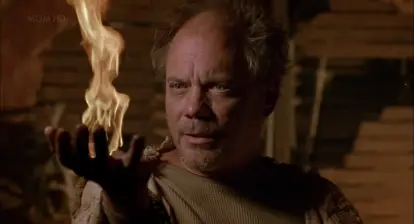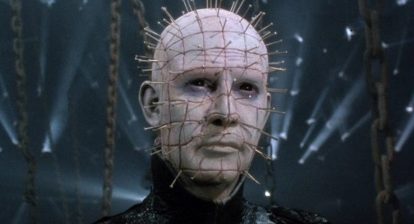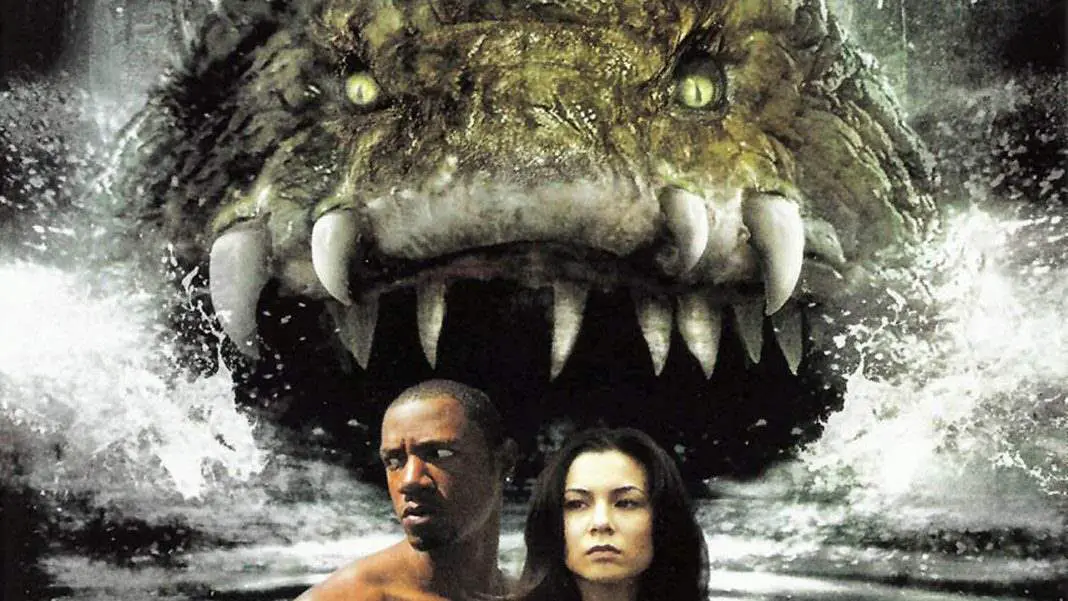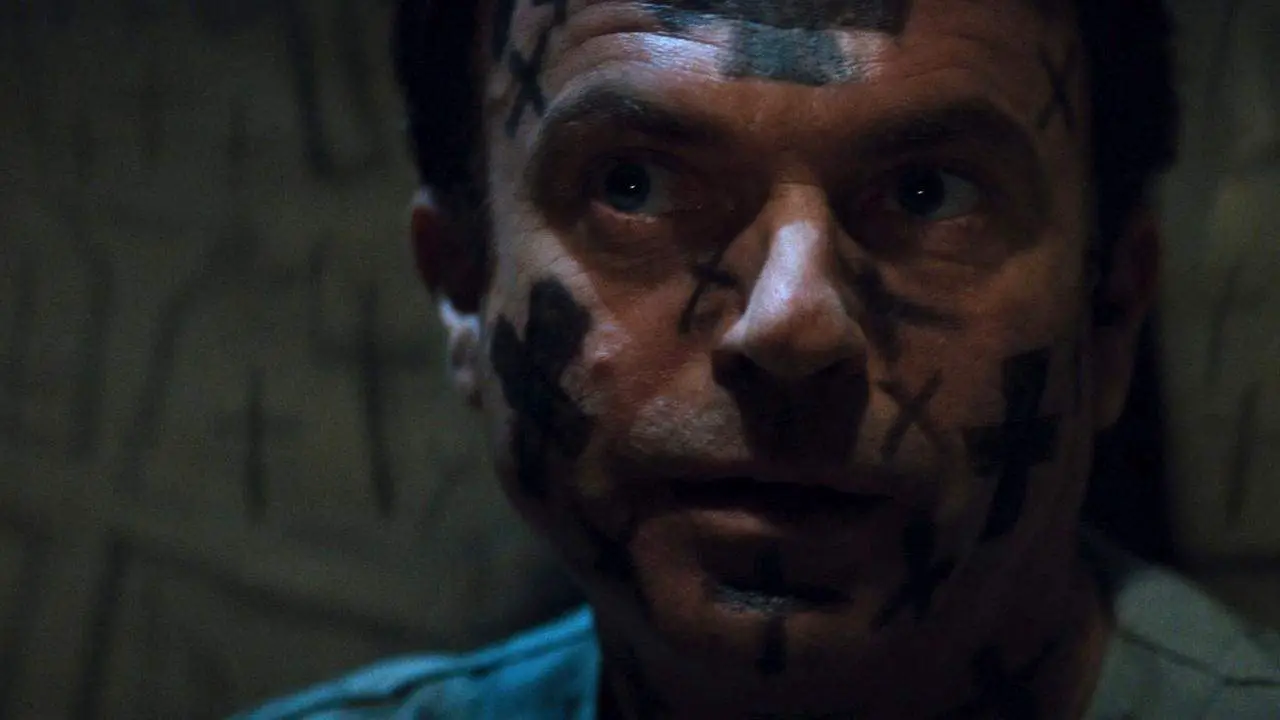Hellraiser was a great horror movie that arrived at exactly the right time. It was made at a point in the 1980’s when things were getting stale. The slasher genre had played itself out. The franchises—all except A Nightmare on Elm Street, which was at the height of its popularity—were running themselves into the ground. The genre, as well as the fans, needed something new and different. That was exactly what Clive Barker offered with Hellraiser. It was still very much a horror film; it had all the gore, suspense and imaginative FX that people wanted and expected from a genre movie in the 1980’s. Not only that, but it introduced a new mythology with limitless potential. A sequel followed directly on the heels of the first an it became a franchise almost immediately.
Things were good for awhile, but they quickly took a turn. Quality dropped for several reasons, which we’ll be looking at here. What could have been one of the greatest horror series of all time is now an anomaly. Hellraiser is the only horror franchise that is almost neatly hybridized between theatrical and straight-to-video releases. It’s had both in almost equal measure. It started out with incredibly talented people involved, but it has lost them all. Even the face of the franchise, Doug Bradley as Pinhead, has been replaced. How did this happen?
It may be hard to believe, but the signs were all there. Hindsight is 20/20 and as we look back through the Hellraiser series, going movie by movie, we’ll take a look at the things that happened behind the scenes to spell doom for a horror franchise that had a very good shot at being one of the best but ultimately ended up being among the worst.
Hellraiser
The term “overnight success” is thrown around a lot but in Clive Barker’s case it is definitely true. His three volume short story collection The Books of Blood were published all at once and the very next day his life had changed. Barker was a playwright and theatre director at the time and had never published anything before those stories. All of a sudden, he was horror author Clive Barker.
Still, horror authors aren’t household names unless their name is Stephen King. It was King, as it turns out, who cemented Barker’s career and popularity. With the quote “I have seen the future of horror and his name is Clive Barker” King kickstarted Barker’s career. Doors opened up for the young author. He was able to get a job directing a feature film without ever having directed anything but a few 8mm shorts.
It wasn’t easy, though. Just because he had a few successful stories under his belt did not mean he was given a whole lot to work with. Hellraiser was a very low budget shoot. But even during production the investors could tell they were onto something. The people in charge knew it was special, that’s the only reason a sequel was made. Which would prove to be fairly ironic later on.
Hellbound: Hellraiser IIThe cast and crew of Hellraiser knew they were making a sequel before it even wrapped filming. Barker conceived the overall story for Hellbound but passed scriptwriting duties off to his friend Peter Atkins while he went to direct Nightbreed for Morgan Creek. Directing duties went to Tony Randel, who had served as one of the editors on Hellraiser. The entire cast of the first movie returned minus Andrew Robinson as Larry.
The story moved in exactly the right direction. It allowed the mythology to blossom. It was a smart sequel that carried things forward in a way that felt right. Kirsty Cotton grew into a larger role as the heroine, backstory was given to the Cenobites themselves—especially Pinhead—and Julia was given a larger antagonistic role. Initially, Barker wanted Julia instead of Pinhead to be the character that would return throughout the series as it continued.
That prospect was offered to actress Clare Higgins, but she rejected it on the grounds that she did not want to be typecast. Still, the franchise felt fertile. Barker and Atkins had a lot of ideas and it looked like Hellraiser III was a surefire bet.
After Hellbound, a sequel seemed imminent. But then New World Pictures, who had backed the first two movies, went out of business. Peter Atkins had conceived of a story with Barker in which Pinhead would be trapped inside of a relic in a church, but when Miramax took control of the franchise the idea was scrapped.
Atkins was also initially supposed to direct the film, but the producers decided he did not have enough experience, so they hired Anthony Hickox instead. Hickox had proven himself in low-budget horror, having directed the two Waxwork features. Hellraiser III is a very different movie than those that came before it. It was the first of the series to be produced in the United States and it definitely feels like it.
It’s bigger, slicker, with explosions and all of the bells and whistles. Visually, it’s completely different, from the yellow hues to the toned-down new Cenobite designs. Doug Bradley as Pinhead is the only returning character—save for a cameo by Kirsty—and is now the leading antagonist, which he had not been in the first two movies. The studio involvement in Hell on Earth is incredibly evident, but it has a smart story and Bradley probably gives his best performance as the character here. He even has a dual role as Pinhead and his former human self, Elliot Spencer.
It could be argued, in some ways, that the franchise died here and has limped on ever since. Clive Barker and Peter Atkins still had ideas as to where the series could go and what could be done with the overall story. While it had mixed reviews, Hellraiser III had made decent money and that’s all a horror film needs to get another sequel off the ground.
The overall story for Bloodline made it the most ambitious Hellraiser yet. In some ways, it was three movies in one. It starts off in the past, with the origin of the puzzle box and its maker Philip Lemarchand. Then it moves to the present, where the modern descendant of Lemarchand finds himself battling not only Pinhead, but the queen of Hell Angelique. He carries on Lemarchand’s unfinished work, a configuration that can capture light and possibly destroy the Cenobites once and for all. The story is then bookended in the distant future, on the space station Minos. There, the descendent of that time finally works out the configuration and manages to destroy Pinhead and his minions.
The story needed a good script to work, but Atkins was more than capable. The early drafts were a large-scale horror epic that Miramax could obviously not afford. What was written as an almost three hour film was cut down to barely over 80 minutes. The studio demanded almost everything be changed, while the feature was already in production. Clive Barker tried to be more involved with this movie, but the studio would not take his story notes or his new Cenobite designs. He was not even allowed on set. Horror FX legend Kevin Yagher marked his directorial debut with this movie, but had his name removed from the final product. That’s what this movie turned out to be, more than anything else: a product.
Miramax wanted something quick and cheap that they could set to an already approaching release date and at least hope to make their money back. Director Joe Chappelle, who had just directed the also notorious Halloween: The Curse of Michael Myers, was called in to do extensive reshoots on the picture, which was where much of what is seen in the finished film was born. The movie was, expectedly, a total failure in theaters. It was also the last Hellraiser that would ever be shown theatrically.
Film journalist, writer, and Hellraiser expert Stephen Jones—who had worked on publicity for the first three movies—wrote a screenplay for Hellraiser 5 titled Hellfire. It would have been a potentially even bigger movie than Bloodline, but would have tied the franchise together and brought back Kirsty Cotton as the heroine. It was not even considered by Miramax as they tried to map the future of the franchise. They decided to go smaller. Much smaller, in fact, as they made the decision to turn Hellraiser into a straight-to-video franchise even after it had already had four films shown theoretically.
The studio found a script they had optioned for a totally original horror film and hired someone to rewrite it so it would fit the Hellraiser universe. They hired an up-and-coming director named Scott Derrickson, who has gone on to find much larger success with horror hits like Sinister and Marvel’s upcoming Doctor Strange. As Pinhead was never intended to be a part of the story, he is in the film for less than four minutes. But Doug Bradley’s return meant that these would be the best four minutes of the whole movie. Clive Barker didn’t know the movie was even in production until after it was released.
Inferno had proven to be enough of a rental success to get another low-budget Hellraiser sequel into production. Like the previous film, Hellseeker was a pre-existing script that was rewritten to fit the Hellraiser mythos. Luckily, this one actually pays closer attention to what had come before and even manages to bring back original franchise star Ashley Laurence as Kirsty Cotton, which is surely the movie’s main highlight.
The reunion scene between Kirsty and Pinhead, which was written by Doug Bradley himself, pays great respect to the characters and does an excellent job of exploring the nature of their relationship. Naturally, most of it was cut from the film but it can at least be found on the DVD. For the most part, this one recycles the plot of Inferno. This time it’s a man who may or may not have killed his wife. It takes this idea and does a whole lot more with it, though. Even though it’s still very low-budget it’s an all around better movie.
Despite the pretty awful title, this is the best of the straight-to-video Hellraisers. It stars Kari Wuher as Amy Klein, a surprisingly well-developed character, a journalist who specializes in the dark corners and the ugly side of life. She is sent to Romania (naturally, where else could these movies afford to be shot?) to investigate a cult known as the Deaders. These are people who are somehow able to bring the dead back to life. Her boss sends her a tape and she needs to verify its authenticity.
Again, this was not originally written as a Hellraiser movie. But it feels like it was. It brings back a plot point from Bloodline, with the descendants of Lemarchand apparently being cursed until the end of time. Pinhead and the other Cenobites (including returning fan-favorite Chatterer) get a little more screen time, but not terribly much. If this had been the first Hellraiser after Bloodline, it would have many more fans. As it is, it’s kind of just another straight-to-video sequel in the eyes of most. By this point, it was getting hard to tell them apart.
Shot back-to-back with Deader, Hellworld is one of the most misguided sequels ever made. It has its fans because it was made for a teenage horror crowd that none of the other movies in the series catered to. This is a movie about teenagers being picked off one by one. Which, obviously, has nothing to do with Hellraiser. Bafflingly enough, this tries to be a movie catered directly to Hellraiser fans at the same time. It’s about people who are fans, who already know everything about the Cenobites and the puzzle box, which could have made it very interesting.
Except in this universe Hellraiser is actually a video game called Hellworld. So fans watching it will both know and not know what they’re talking about at the same time. It’s a movie that proves you can’t have your cake and eat it too. If the franchise died with Bloodline, Pinhead dies here. We finally see him as he was never meant to be: just another horror movie monster. He’s actually going after people with meat cleavers this time and chopping off heads. It may not turn out to be him later on, but the image is there all the same.
The movie has Lance Henriksen going for it, but him being in the picture is as unfortunate for him as this one is for the whole franchise. Both this and Deader sat on the shelf for a few years before they were released in 2005. No Hellraiser movie followed for some time.
Revelations is the perfect cynical epilogue to the whole series. It proves that any artistic integrity that had ever been involved with Hellraiser had simply been thrown out the window. This movie was made for only one reason: Dimension realized that if they did not release a Hellraiser movie in 2011, they would lose the rights to the franchise. Even they must have realized that’s not a great reason to make a movie, because they decided to treat it like less than a movie and only gave it a budget of $300,000. That’s $700,000 less than each of the previous extremely low-budget sequels had cost.
The movie was shot over the course of three weeks. An offer was made to Doug Bradley, but they would pay him next to nothing and did not have time to negotiate. When Bradley respectfully declined, the role was recast immediately. The only thing going for this movie is the script by Gary Tunnicliffe, who had worked on the FX for the series dating almost back to the beginning. He knows the mythology in and out, so the script does a good job of going back to tone of the first movie.
It’s the only straight-to-video Hellraiser movie that was actually written as a Hellraiser movie, but there’s nothing going into it to help it pull that script off. The cast is largely unbearable. The new Pinhead is utterly forgettable. Tunnicliffe seems to be the only one involved with any respect for the Hellraiser mythology. Everyone else was kicked out the door a long time ago.














